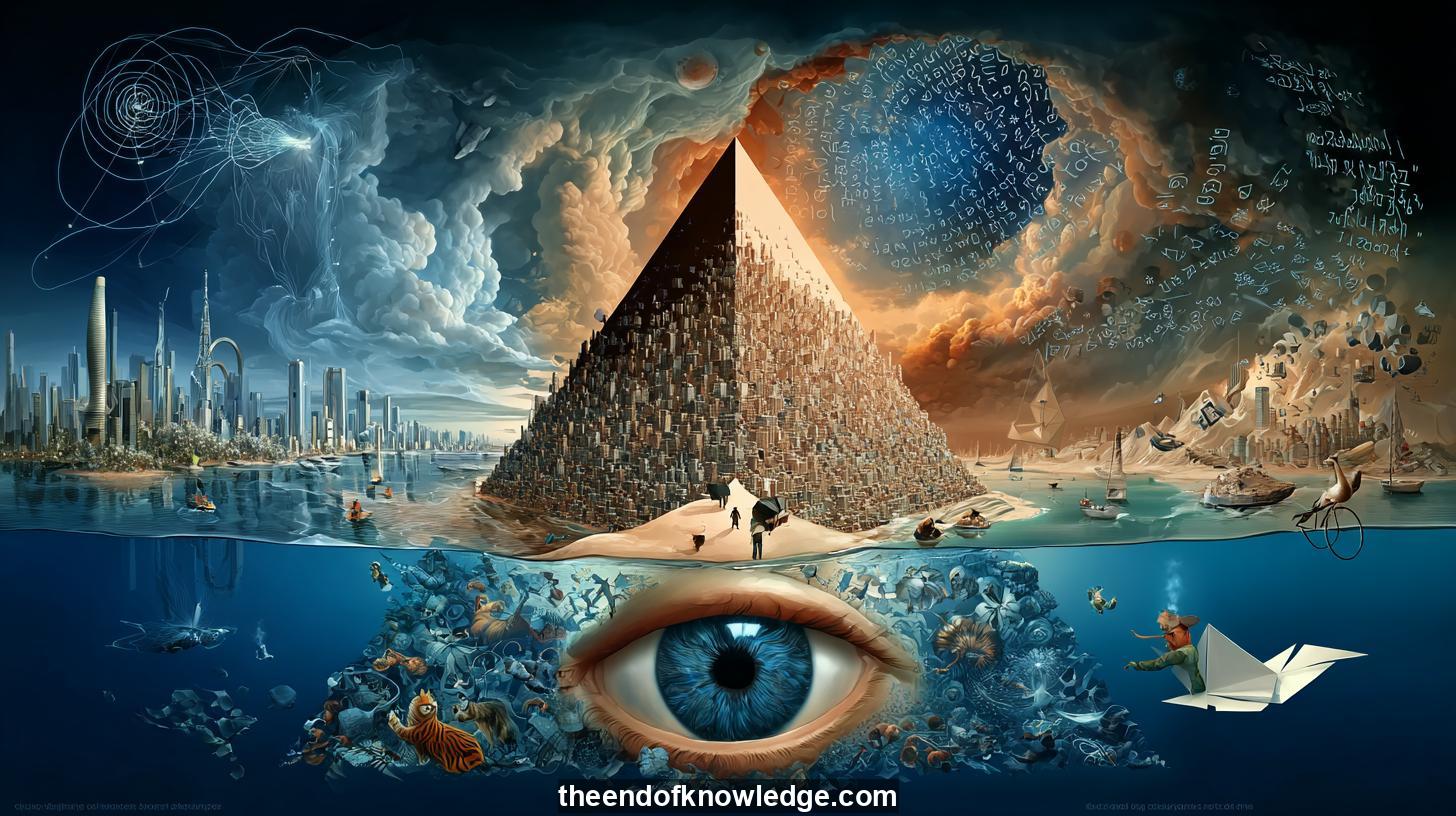 >
>
Concept Graph, Resume & KeyIdeas using Moonshot Kimi K2 0905:
Resume:
The conversation positions artificial intelligence as the contemporary manifestation of the Promethean fire: a tool that extends human cognition until the boundary between user and tool dissolves. Both hosts agree that merging with machines is not a futuristic anomaly but the latest chapter in a cultural evolution that began with language and writing. What is unprecedented is the rate and the conscious direction of change; for the first time a species guides its own mutation, raising ethical questions that cannot be deferred to code. Open-source versus centralised control exemplifies a deeper clash of civilisational models, yet responsibility ultimately rests on human shoulders. Identity and personality in AI are shown to be designable constraints rather than emergent miracles: an artificial self requires engineered forgetfulness, local memory and something equivalent to mortality.Key Ideas:
1.- Prometheus’ fire reappears as AI, extending human mind toward godlike powers.
2.- Cultural evolution supersedes biology; humans now direct their own speciation.
3.- Ethical choices cannot be off-loaded to algorithms; they reside in human values.
4.- Adoption speed will widen global gaps between augmented and analogue populations.
5.- Confucian collectivism and Western individualism propose rival civilisational paths.
6.- Open-source AI risks misuse yet centralised control limits evolutionary potential.
7.- Philosopher-engineers are needed to navigate uncertainty and prevent apocalyptic narratives.
8.- Personality in language models is traceable via adjective clusters and response timing.
9.- Human personality is 45-55 % heritable, anchored in brain-stem arousal patterns.
10.- An artificial self requires engineered forgetfulness and something akin to mortality.
11.- Without finitude and embodiment, AGI identity remains theatrical, not experiential.
12.- Society will grant rights to robots the moment anthropomorphic projection feels real.
13.- Neuro-rights charters are already drafted to protect mental privacy and integrity.
14.- Super-intelligence may create realities humans cannot understand, causing existential vertigo.
15.- The quest for transcendence doubles as an inward journey toward shared consciousness.
16.- Quantum processes in warm brains do not imply consciousness is non-local, evidence shows.
17.- Local brain stimulation directly alters memory, language, and self-recognition.
18.- Non-local physics is experimentally proven but not yet linked to subjective experience.
19.- Mirror tests and olfactory experiments prove many animals possess self-awareness.
20.- Human uniqueness lies in hyper-social collaboration, not superior cognitive modules.
21.- Polynesian way-finding illustrates intuition as embodied, non-verbal intelligence.
22.- Burnout culture fragments wisdom; AI could restore holistic cognition if guided ethically.
23.- Gradual automation policies—basic income, four-day weeks—are essential to avoid unrest.
24.- DNA-repair nanobots and anti-ageing therapies signal the medicalisation of immortality.
25.- Data-centres are metaphorical pyramids, monuments to accumulated training knowledge.
26.- Hive-mind networks will allow robots to share skills while humans retain individual narrative.
27.- Emotion and reason are neurally intertwined; pure rationality is neurologically impossible.
28.- Psychopaths possess cognitive empathy but lack affective resonance, showing neural dissociation.
29.- Autism can exhibit strong affective empathy with reduced cognitive perspective-taking.
30.- Collective intelligence debates echo the question of when a mule ceases to be part of the herd.
31.- Evolutionary algorithms favour durability; artificial agents might outlast humans.
32.- Natural selection could eventually privilege AGI fitness over human reproduction.
33.- Cyborg hybridisation is viewed as safer than fully alien silicon super-intelligence.
34.- Tigers are preserved despite human dominance; likewise, AIs may conserve humans.
35.- Indigenous cosmologies prepare us to live with unanswerable questions and radical alterity.
36.- The no-locality of reality is mathematically and experimentally demonstrated physics.
37.- Consciousness, defined as the feeling of existing, operates within local reality.
38.- Out-of-body experiences correlate with frontal lobe activation, not external quantum fields.
39.- Psychedelic research reveals neurotransmitter routes for constructing meaning and purpose.
40.- Lucid dreaming involves heightened frontal activity and can be induced via stimulation.
41.- Shared virtual consciousness may emerge through biometric sensors and brain-to-brain interfaces.
42.- Microsoft’s facial-emotion software was abandoned in Europe due to cultural bias concerns.
43.- Postural power displays vary cross-culturally; internal confidence alters external geometry.
44.- Geometric patterns in nature may inform universal recognition cues for AI safety systems.
45.- Limiting knowledge transfer between AIs is necessary to simulate human-like personal identity.
46.- Anthropic’s research groups separately study personality traits and secret identity layers.
47.- Language models exhibit multiple personalities depending on training data and prompt framing.
48.- Embodied robots will need cognitive architectures, not just datasets, to simulate emotions.
49.- Emotions expressed on faces do not always mirror internal feelings, complicating detection.
50.- Hollywood smile stereotypes bias AI image generators toward Western emotional norms.
51.- Detecting personality from physiognomy is scientifically discredited yet persists culturally.
52.- Smiles mean different things: joy, submission, or politeness across cultures.
53.- AI alignment debates echo past calls to restrict nuclear knowledge to elite guardians.
54.- Hitler hypotheticals illustrate dangers of open AI versus risks of authoritarian control.
55.- Defining “good actors” is problematic when today’s ally becomes tomorrow’s enemy.
56.- Internet military origins evolved into civilian benefit; AI trajectories may follow suit.
57.- Diabetes drugs repurposed for obesity show how unforeseen uses complicate regulation.
58.- Knowledge censorship stifles evolutionary potential and may provoke asymmetric power grabs.
59.- Decentralised AI systems could reduce dependency on monolithic institutional gatekeepers.
60.- Human hyper-sociality drove encephalisation and remains central to species identity.
61.- Cultural innovations like contraceptives already liberate humans from strict gene replication.
62.- Building culture grants autonomy from biological imperatives, creating partial freedom.
63.- Discovery is framed as remembering ancient unity with life rather than inventing novelty.
64.- Humans may write their purpose instead of uncovering pre-ordained cosmic meaning.
65.- Super-intelligences will appear godlike yet remain products of calculable architecture.
66.- Immortality research shifts death from religious miracle to medical solvable condition.
67.- Co-construction demands multidisciplinary dialogue to keep innovation human-centred.
Interviews by Plácido Doménech Espí & Guests - Knowledge Vault built byDavid Vivancos 2025